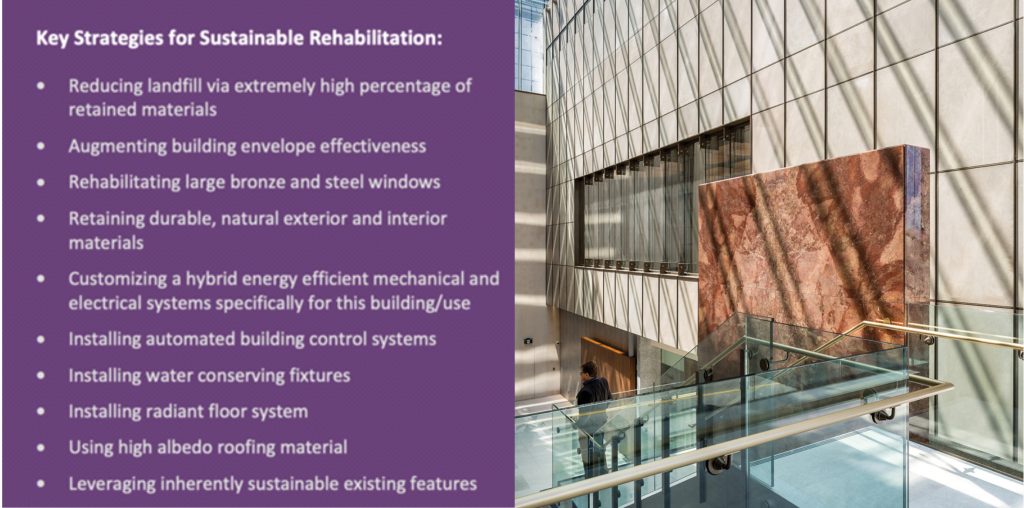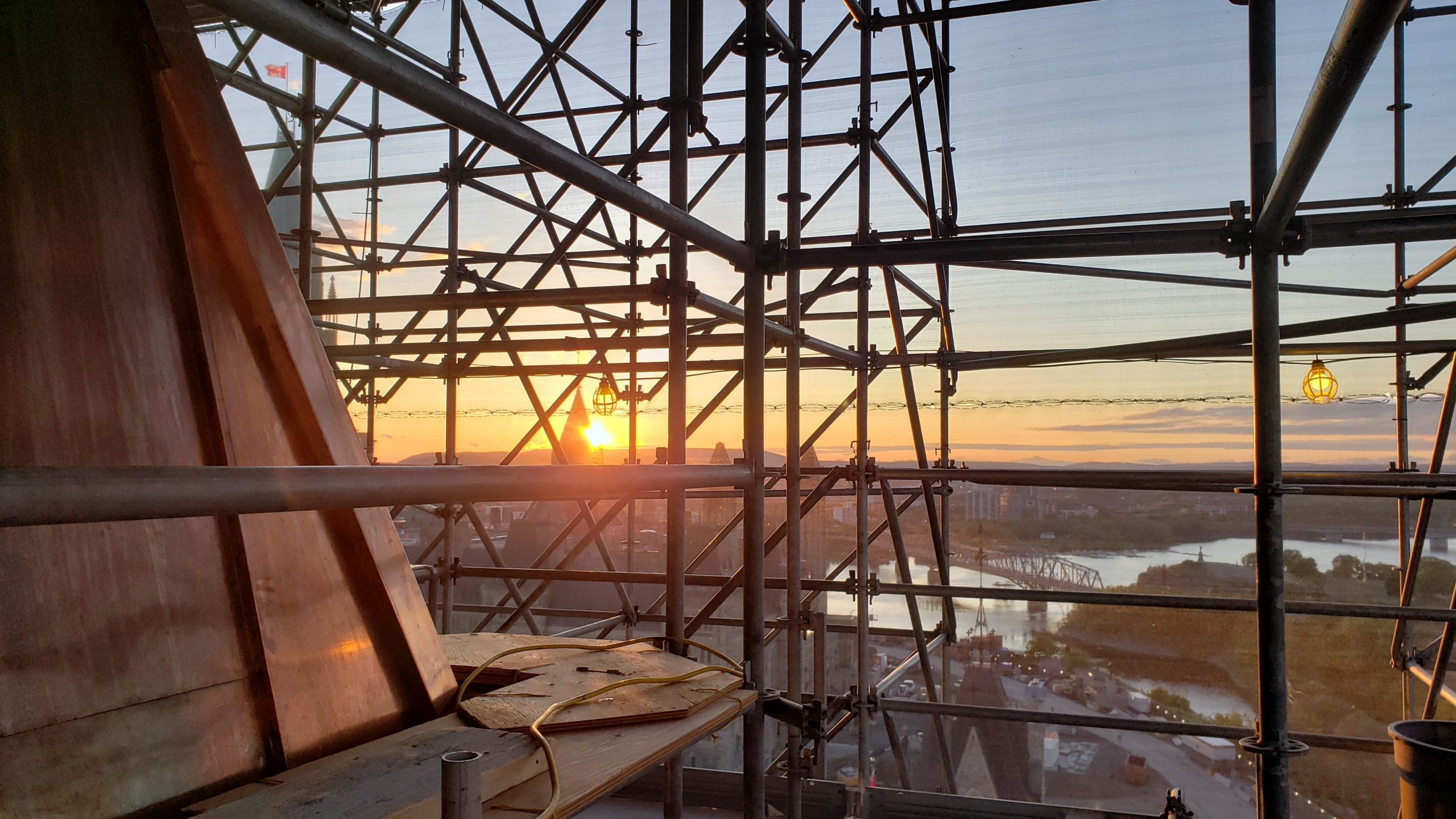MTBA’s Mark Thompson Brandt, together with his ZNCC Co-Chair Lori Ferriss, presented the work of the Climate Heritage Network (CHN) Working Group 3 “Building Reuse is Climate Action!” on the first day of COP 26 in Glasgow, at the CHN Annual General Assembly.
The presentation titled: “Building Reuse is Climate Action: Why recycling buildings makes carbon sense, and ?rapid carbon reduction to net zero makes the case for building reuse” ?covered some of ZNCC’s Case Studies, including the Sir John A. Macdonald Building in Ottawa, the NORR/MTBA adaptive reuse that earned Green Globes’ 5 Globes (and on a 3 Globes mandate!), and also was awarded the inaugural Canada Green Building Council (CaGBC) Existing Green Building Award, in 2017.
The Project Team employed some key strategies, which are echoed by the ZNCC’s call for the reuse of historic buildings as the best possible response to climate action:

By adaptively reusing the space and introducing it to new building programs to suit the federal government’s needs, the rehabilitation efficiently avoided demolishing the building to replace it with new infrastructure, which would have vastly increased the carbon footprint. Instead, an integrated team of experts enabled both the conservation and programmatic needs of the project, including energy efficiency, ecological implications and meeting sustainability goals.
Heritage conservation architects and engineers have the skills to design interventions into existing buildings while retaining value; hence they would make good leaders to help scale up deep green retrofit, rehabilitations and reuse of the massive inventory of existing buildings.
Reusing and retrofitting an existing building can result in a 70%–85% reduction in embodied carbon emissions compared to new construction.
— ZERO NET CARBON COLLABORATION FOR EXISTING & HISTORIC BUILDINGS, 2019
To make this shift to building reuse more accessible to become the status-quo, ZNCC is assisting in developing Lifecycle Carbon Assessment (LCA) tools such as Carbon Avoided Retrofit Estimator (C.A.R.E.) and similar methodologies to allow holistic buildings and portfolio management to assess higher impact investments with fewer unintended negative consequences?. Heritage buildings have the potential to become laboratories for innovation at a time when society needs to scale-up building performance retrofits? and respond to numerous social issues related to space-making, albeit responding to housing shortages or re-imagining the post-COVID-19 workplace.
Heritage buildings and leaders can help educate the public, while increasing understanding and support for building reuse as climate action. Part of this action includes the joint responsibility of establishing new policies, by communities, governments and/or institutions, related to building reuse and initiated through investment incentives and/or regulations & code.


